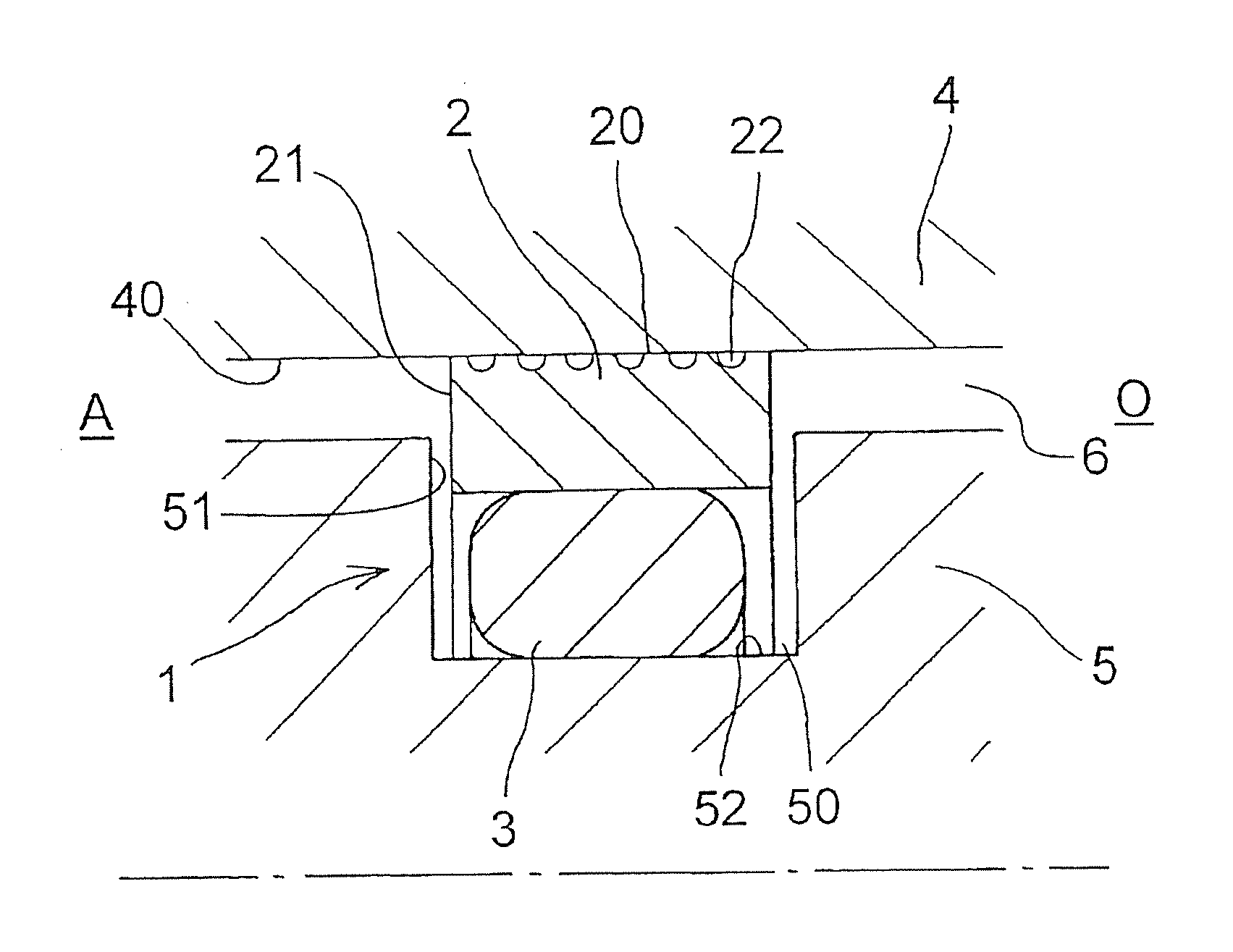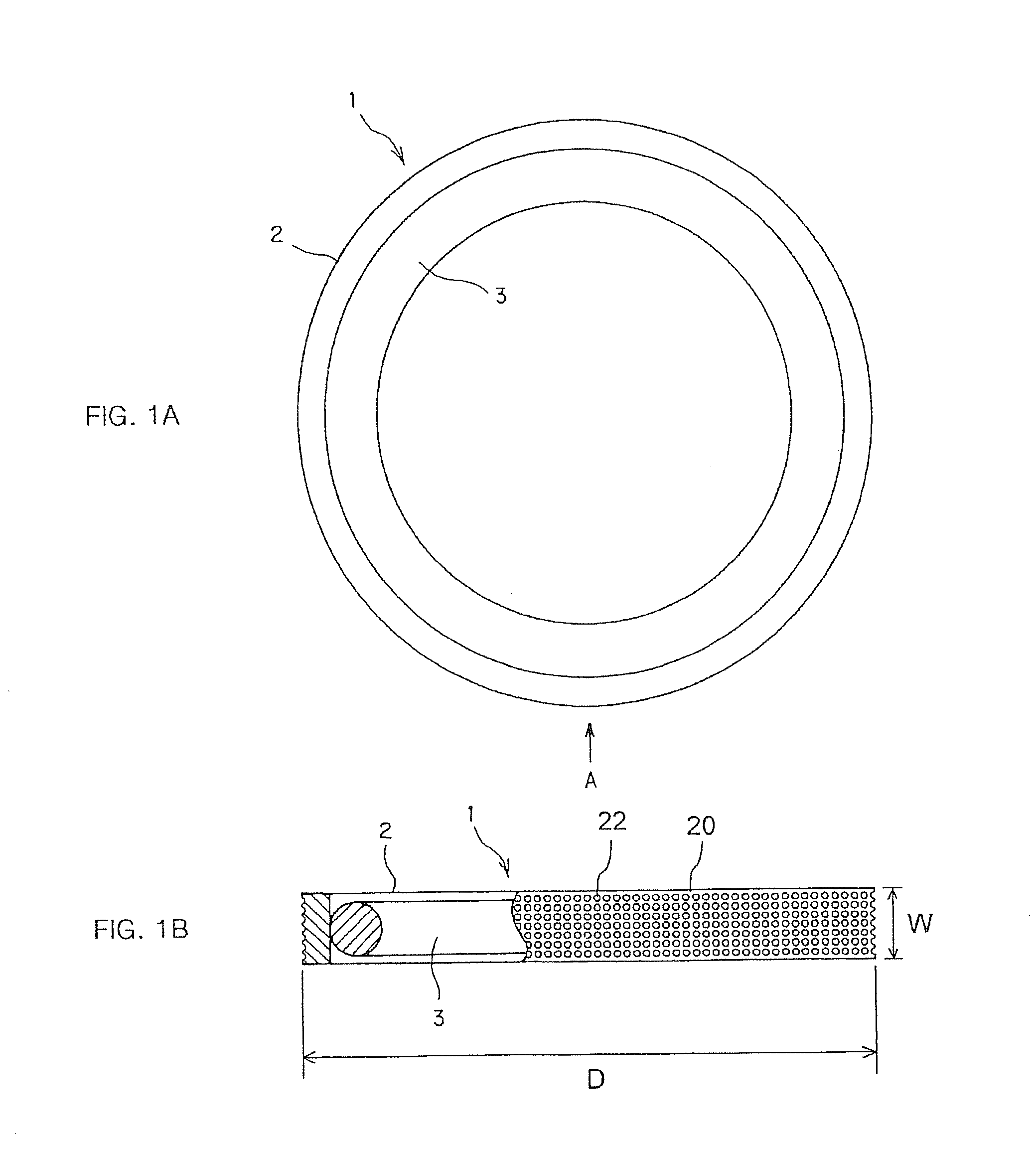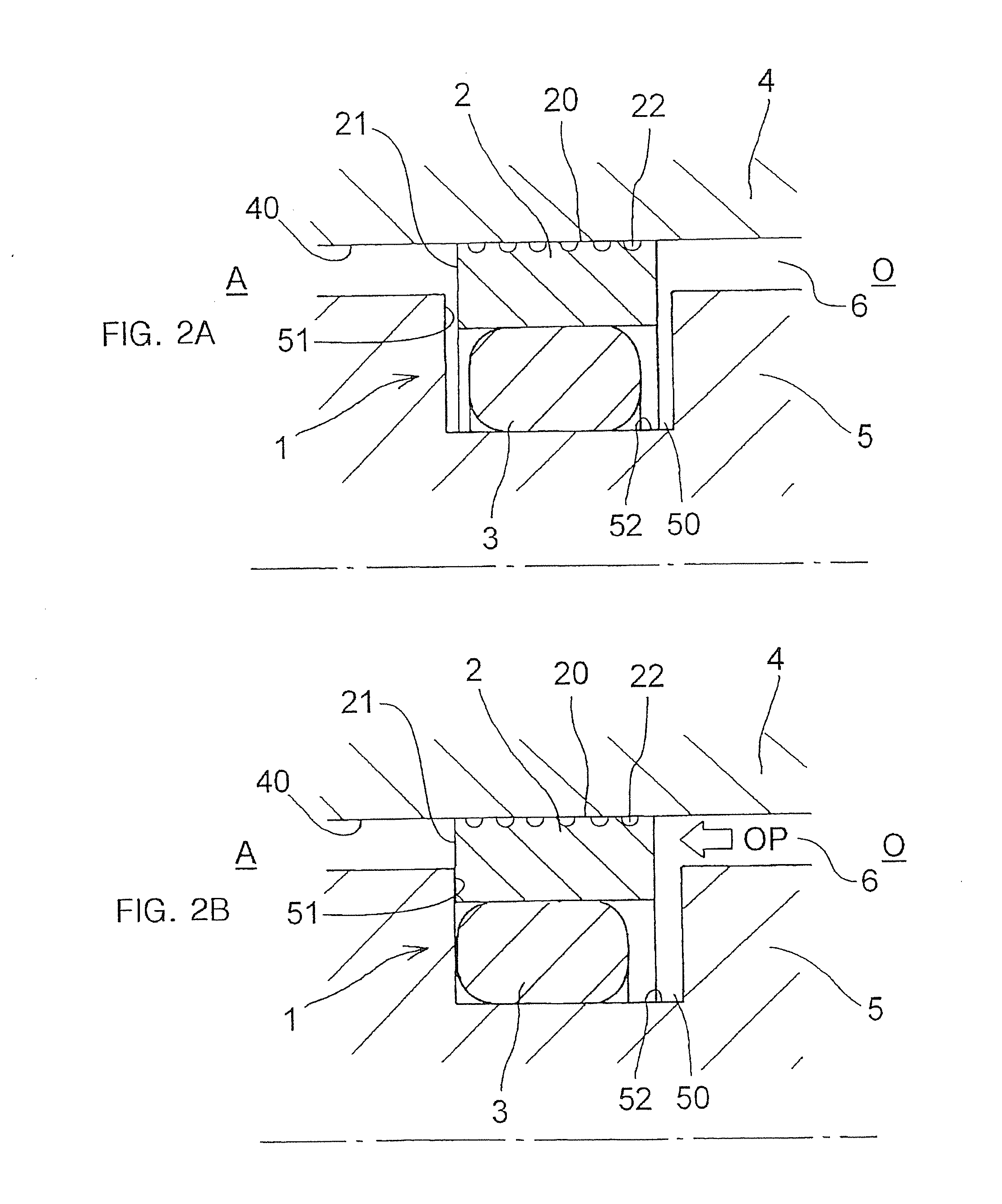Sealing device and production method thereof
a sealing device and sealing technology, applied in the direction of brake systems, manufacturing tools, machines/engines, etc., can solve the problems of reducing sealing performance, low sealing performance, damage or breakage, etc., to improve the sliding property of the sealing ring, reduce the cost of materials, and reduce sliding resistance
- Summary
- Abstract
- Description
- Claims
- Application Information
AI Technical Summary
Benefits of technology
Problems solved by technology
Method used
Image
Examples
first embodiment
[0059]A sealing device according to a first embodiment of the present invention will be described while referring to FIG. 1 and FIG. 2. FIG. 1 is a schematic diagram showing the construction of the sealing device according to this embodiment, wherein FIG. 1A shows an appearance thereof as seen in an axial direction, and FIG. 1B is an arrow view as seen from arrow A of FIG. 1A, showing a partial cross section thereof. FIG. 2 is a schematic half cross sectional view showing a mounted state of the sealing device according to this embodiment, wherein FIG. 2A shows a state with no pressure applied, and FIG. 2B shows a state with pressure applied.
[0060]The sealing device 1 according to this embodiment is used, for example, as a sealing device for a piston in a hydraulic cylinder, i.e., a so-called piston seal that is fitted into an annular groove formed on an outer peripheral surface of the piston for sealing an annular clearance or gap between the piston and the cylinder.
[0061]The sealin...
second embodiment
[0087]A sealing device according to a second embodiment of the present invention will be described while referring to FIG. 5. FIG. 5 is a schematic cross sectional view showing the sealing device 1′ according to the second embodiment. Here, note that constructions common to those of the first embodiment are identified by the same symbols and an explanation thereof is omitted. Constructions, their operational effects and the like not particularly described are similar to those in the first embodiment.
[0088]The outer peripheral surface 20 of the seal ring 2 has axially opposite sides thereof formed into taper surfaces 24, respectively. With this, the sliding area with respect to the inner peripheral surface 40 of the housing 4 becomes small, and the sliding resistance thereof can be reduced. In addition, the contact pressure of the outer peripheral surface 20 with respect to the inner peripheral surface 40 of the housing 4 can be reduced by a wedge effect that is produced by the fluid...
PUM
| Property | Measurement | Unit |
|---|---|---|
| depth | aaaaa | aaaaa |
| depth | aaaaa | aaaaa |
| outer diameter | aaaaa | aaaaa |
Abstract
Description
Claims
Application Information
 Login to View More
Login to View More - R&D
- Intellectual Property
- Life Sciences
- Materials
- Tech Scout
- Unparalleled Data Quality
- Higher Quality Content
- 60% Fewer Hallucinations
Browse by: Latest US Patents, China's latest patents, Technical Efficacy Thesaurus, Application Domain, Technology Topic, Popular Technical Reports.
© 2025 PatSnap. All rights reserved.Legal|Privacy policy|Modern Slavery Act Transparency Statement|Sitemap|About US| Contact US: help@patsnap.com



